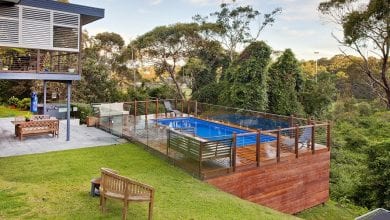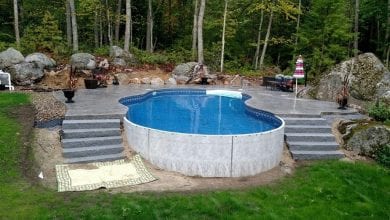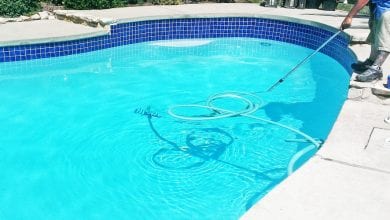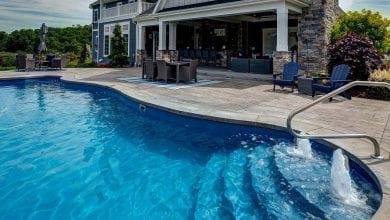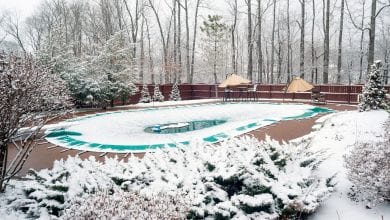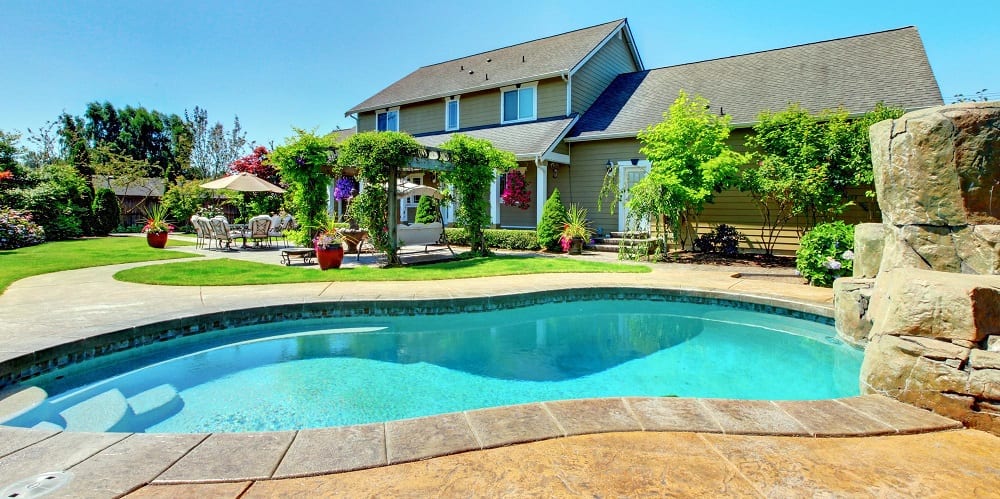
How To Shock A Pool?
One of the most frequently asked questions that we receive is how to shock a pool. Although many people realize the need to shock their pool, they aren’t always as confident in their ability to shock it. They fear that they won’t do it properly and they’ll end up with a proliferation of flora and fauna growing in the water, or they feel that they will use too much and that will end up making the water too harsh for people swimming in it.
To help educate our readers, we’ve decided to go ahead and write a guide that will answer all of their questions well enough that they’re confident in their pool shocking abilities. So, we’re going to break down the process of shocking a pool into separate sections so that we can answer the why and how of shocking a pool.
Why Should A Pool Be Shocked?
We think it would be irresponsible to begin any comprehensive guide on the process of shocking a pool without first talking about the reason why a pool should be shocked in the first place. And believe it or not, this is a question that we get asked every day. That’s why we’ve decided to list some of the reasons why a pool owner needs to shock their pool.
- Shock removed pool bacteria.
- Shock removes visible pool algae.
- Shock keeps pool water healthy.
- Shock removes chloramines and other byproducts from disinfecting products.
- Shock helps to clarify clouding water.
- Shock removes organic and inorganic contaminants in the pool.
When Should The Pool Be Shocked?
One of the things that confuse most people is precisely when they should shock a pool. They wonder just how often it should be shocked, and also wonder under what circumstances they might have to do an additional shock treatment to keep the pool’s fauna and flora under control. So let’s start with the schedule for routine pool shock and then talk about what circumstances might require an additional pool shock.
As a matter of regular maintenance, you should shock your pool approximately once a week. Most experts say that the pool owner should alternate between a chlorine shock and a non-chlorine shock. This means that one week they should use a chlorine shock and then the next week they should use a non-chlorine shock. This provides the best balance between providing the highest level of protection against flora growing in the pool without completely disrupting the balance of the pool.
Now, that we’ve gone over the basic week-to-week maintenance that needs to be done, let’s talk about some of the special circumstances under which an additional pool shock might be necessary. Let’s take a look at some of these before moving on with our guide.
Heavy Pool Usage
One of the circumstances, when an additional pool shock might be necessary, is when the pool is being heavily used. This can be after pool parties or if extra dirt or other contaminants were dragged into the pool by swimmers.
Heavy Rains Or Thunderstorms
If there were just heavy rains or thunderstorms in the area of the pool, then extra contaminants might get knocked into the water including leaves or dust. Extra rainwater can also throw the balance of the pool off, so the pool owner will then need to do an additional pool shock.
Algae Outbreaks
Let’s face facts, even if you keep your pool meticulously clean and shocked weekly, you might end up with an algae outbreak. That’s not a failure on your part, it’s something that happens to everyone, so when it does happen, using a powerful super-chlorination pool shock can get the algae under control.
Opening & Closing The Pool
When the pool is first opened, it should immediately be shocked after the pool has been balanced with other chemicals. Also before you close the pool, it’s important to do a final shock to keep contaminant levels low during the winter months.
The Different Types Of Pool Shock
Another thing that tends to confuse many people are the large number of different pool shocks that are available on the market. Some products use Calcium Hypochlorite, Sodium Dichlor, Sodium Hypochlorite, or Potassium Monopersulfate. Let’s examine each of these different types of pool shock and see what they offer to you.
Calcium Hypochlorite
Known either as Calcium Hypochlorite or Cal-Hypo, this product is one of the more powerful pool shocks available. It is also one of the fastest-acting shocks available. This product dissolves quickly and also burns off quickly under the ultraviolet radiation from the sun. Although this product won’t raise the cyanuric acid levels of the pool, it will raise the pH levels of the pool slightly.
Of course, this product has to be used carefully to keep it from damaging your pool. It should always be pre-dissolved before it’s added to the pool. If it’s not pre-dissolved, then it can damage the pool’s surface. Once a cal-hypo shock has been used, wait for chlorine levels to return to normal before using it.
Sodium Dichlor
Sodium Dichlor goes by several different names including dichloroisocyanuric acid or dichloro-s-triazinetrione. This is a slow-dissolving and stabilized method of pool shock. This product is different than Cal-Hypo because it dissolves slowly and will raise cyanuric acid levels. It will also usually raise a pool’s pH levels as well.
Sodium Dichlor can not only be used as pool shock, however. It can also be used as an oxidizer and a sanitizer. Although the consumer is going to want to follow the directions on this product to the letter, most of them require the consumer to use 1-pound of it for every 10,000 gallons of water in the pool.
Potassium Monopersulfate
Also known as MPS, Potassium Monopersulfate is an oxygen-based shock that’s an alternative to chlorine shock. This product can be used to oxidize pool water, helps chlorine operate more efficiently, and can help destroy contaminants. MPS won’t change the pool’s cyanuric acid levels and it’s known as being a shock-and-swim pool shock. This means that it can be used at any time throughout the day, and the pool can be used 15-minutes after using this product.
Sodium Hypochlorite
This is a product that isn’t ordinarily used in home pools. It’s an extra-strong bleach pool shock that dissolves quickly and doesn’t need to be pre-dissolved before it’s added to a pool. This product is usually only used in commercial pools, and as such, is delivered in storage drums instead of consumer-friendly smaller packages. It’s a product that’s usually used in hotel swimming pools or health club pools.
How To Shock A Pool
Now that we’ve covered the why, when and the what of using pool shock, it’s time to turn our attention to the how. Yes, we’re going to go through the entire process of shocking a pool from beginning to end. Before we begin, however, we would like to say that this method of shocking a pool is only the typical way of shocking the pool. The type of pool shock that you use, as well as the size of your pool, will determine how you need to shock your pool. Therefore, it’s always a good idea to read, understand and follow completely the instructions found on your pool shock package.
First Step: Test, Test, Test
The first step that has to be done before a pool shock is used is to test the pool. This can be done with either test strips or using a full water test kit, it really doesn’t matter. All that matters is that pH levels should be in the proper range before proceeding. For maximum shock efficiency, make sure that the pH level of the pool should be between 7.2 to 7.4.
Second Step: Turn On The Filtration System & Pump
The next step that the consumer should perform is to turn on their pump and filtration system. The shock is going to kill algae, bacteria, and contaminants, so the consumer is going to want to be able to filter those particles out. That’s why a lot of people shock in the evenings. They can shock their pool and then let the pump filter run all night long.
Third Step: Allow Free Available Chlorine To Drop
Most people are going to want to make sure that their pool pump runs at least 6-hours after they shock the pool. After this amount of time has passed, check the Free Available Chlorine, or FAC, and make sure that it’s within acceptable limits. According to the Pool & Hot Tub Alliance, the FAC of the pool should be between 2 and 4 parts per million.
Fourth Step: Enjoy The Pool
Once the FAC of the pool is within acceptable limits, the pool can now be enjoyed. Make sure to keep track of the pool’s element levels as well as its cleanliness levels to ensure that it stays in good condition.
Bonus Section: Keeping The Pool Clean & Healthy
Since we’ve covered everything that we can think about as far as pool shock is concerned, we wanted to do a section that will help our readers not only handle pool shock better but also handle all of the other products and procedures they need to handle to keep their pool clean. With that in mind, we’ve listed some of the steps to keeping a pool clean and healthy.
Step One: Keep On Top Of Pool Chemistry
Although people have to keep track of their FAC when using pool shock, they should also be keeping track of the rest of their pool water’s chemistry as well. At least once every two weeks, or preferably once a week, the pool owner should run a complete analysis of their pool’s chemistry.
Step Two: Keep The Skimmer Basket Clean
The cleaner the skimmer basket is, the more contaminants it can remove from the water, and the more efficiently the filtration system will work. The skimmer basket should be checked once per day and emptied as needed to keep it in good condition.
Step Three: Clean The Lint Pot
The lint pot is another part of the filtration system that filters out stray particles such as lint and hair. This is a part of many pumps and it should be checked every two weeks or so to make sure it’s in good condition. If it’s clogged, then it should be cleaned according to the manufacturer’s directions.
Step Four: Maintain Proper Water Levels
Another thing that the pool owner can do to keep their pool in good condition is to maintain proper water levels. If the water is too low or too high, then the pool skimmer won’t be able to do its job properly. Low or high water levels will also make it difficult to keep the pool’s chemistry in order.
Step Five: Keep An Eye On The Chlorinator
It’s also a good idea to keep an eye on the pool’s chlorinator. You’ll want to make sure that it has the proper level of tablets in it and that it isn’t clogged. This will ensure that it’s delivering the right amount of chlorine throughout the day.
Step Six: Do A Visual Inspection
The last thing that the pool owner should do is to do a visual inspection of the pool. This means making sure that the filtration system is in good working condition, and that the body of the pool doesn’t have cracks or other defects. It’s also a good idea to inspect the area surrounding the pool and make sure that any protective barriers, gates, fences, or alarms that keep pets and children out of the pool are in good working condition. This will ensure that the pool is as safe as it is healthy.


